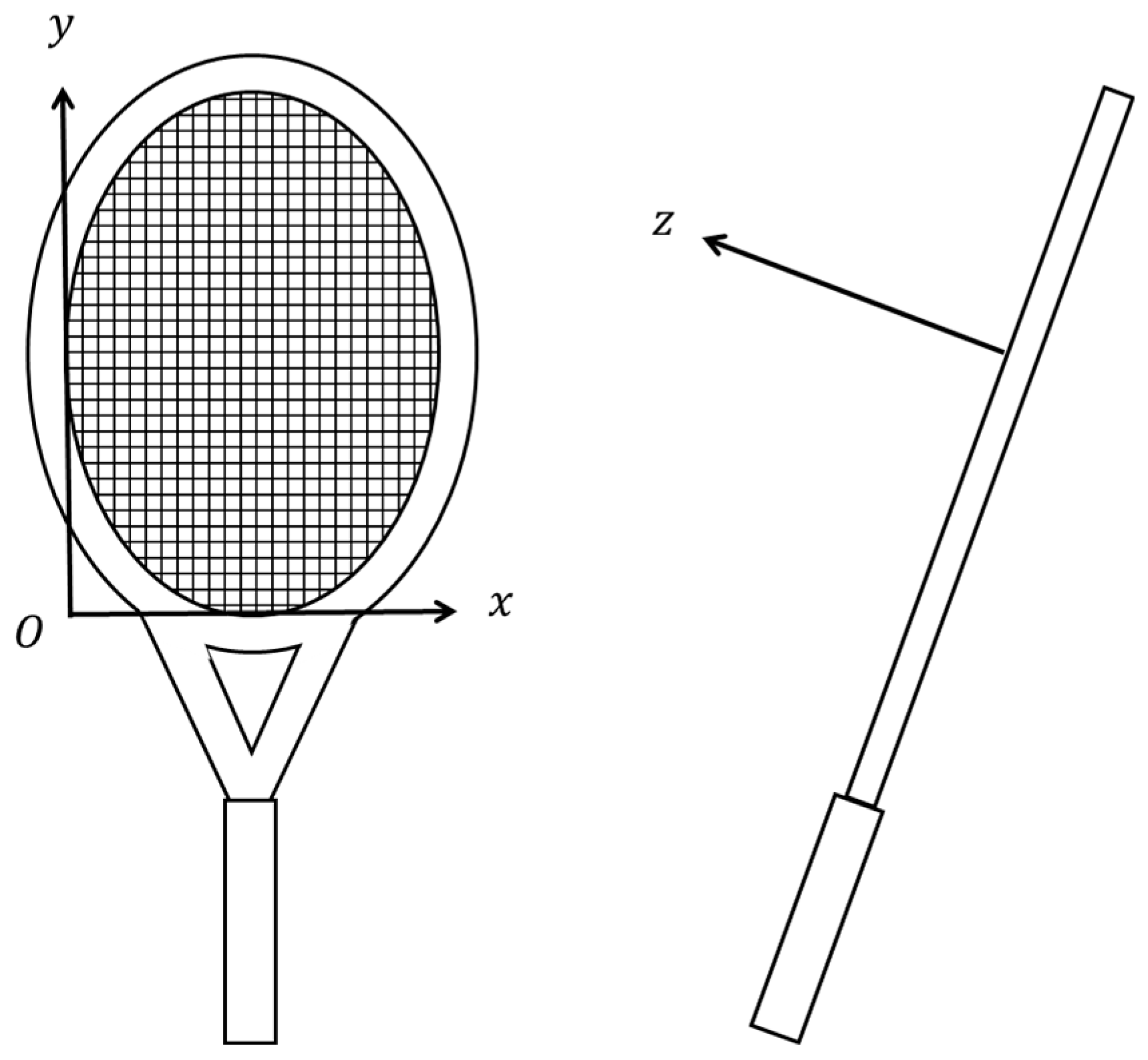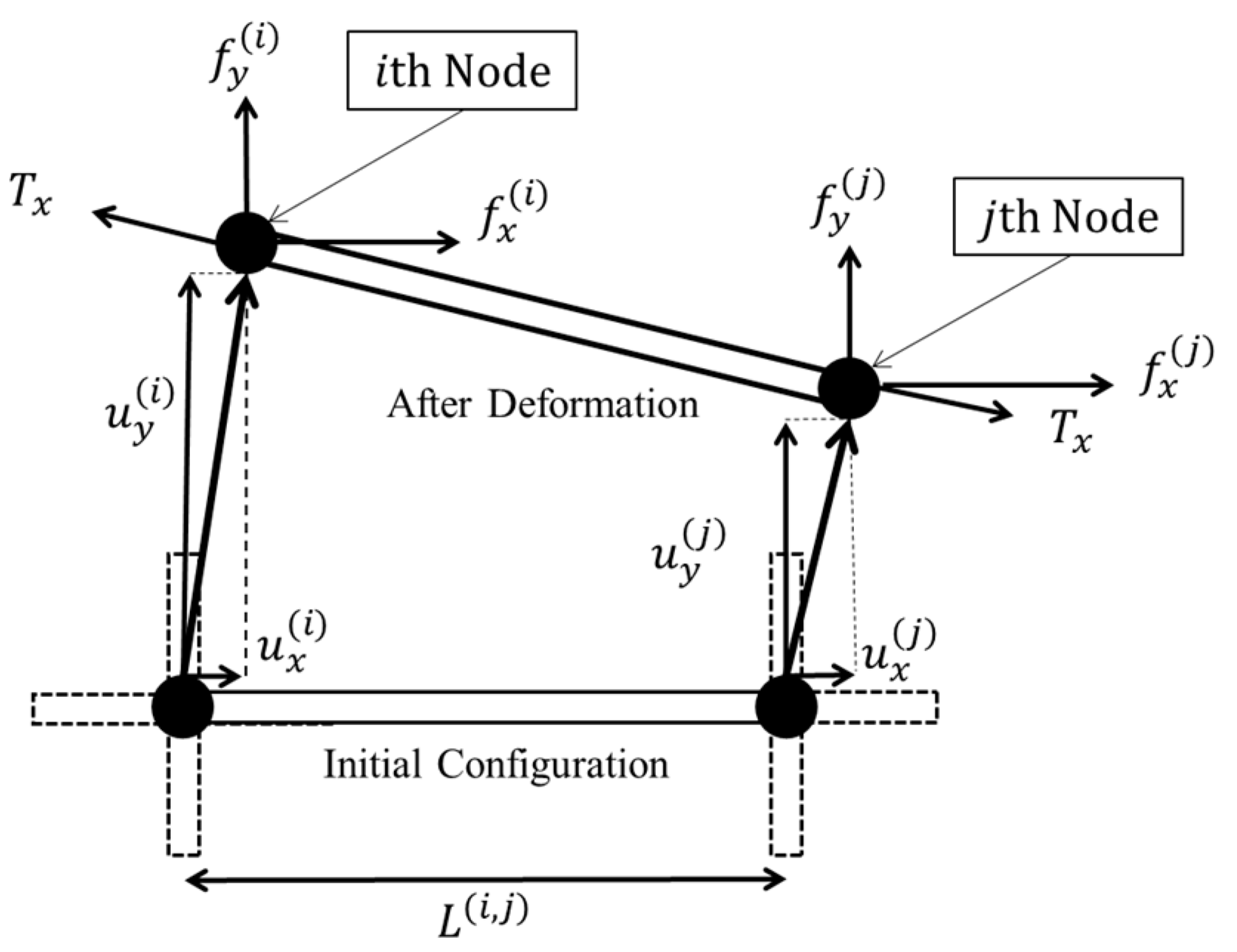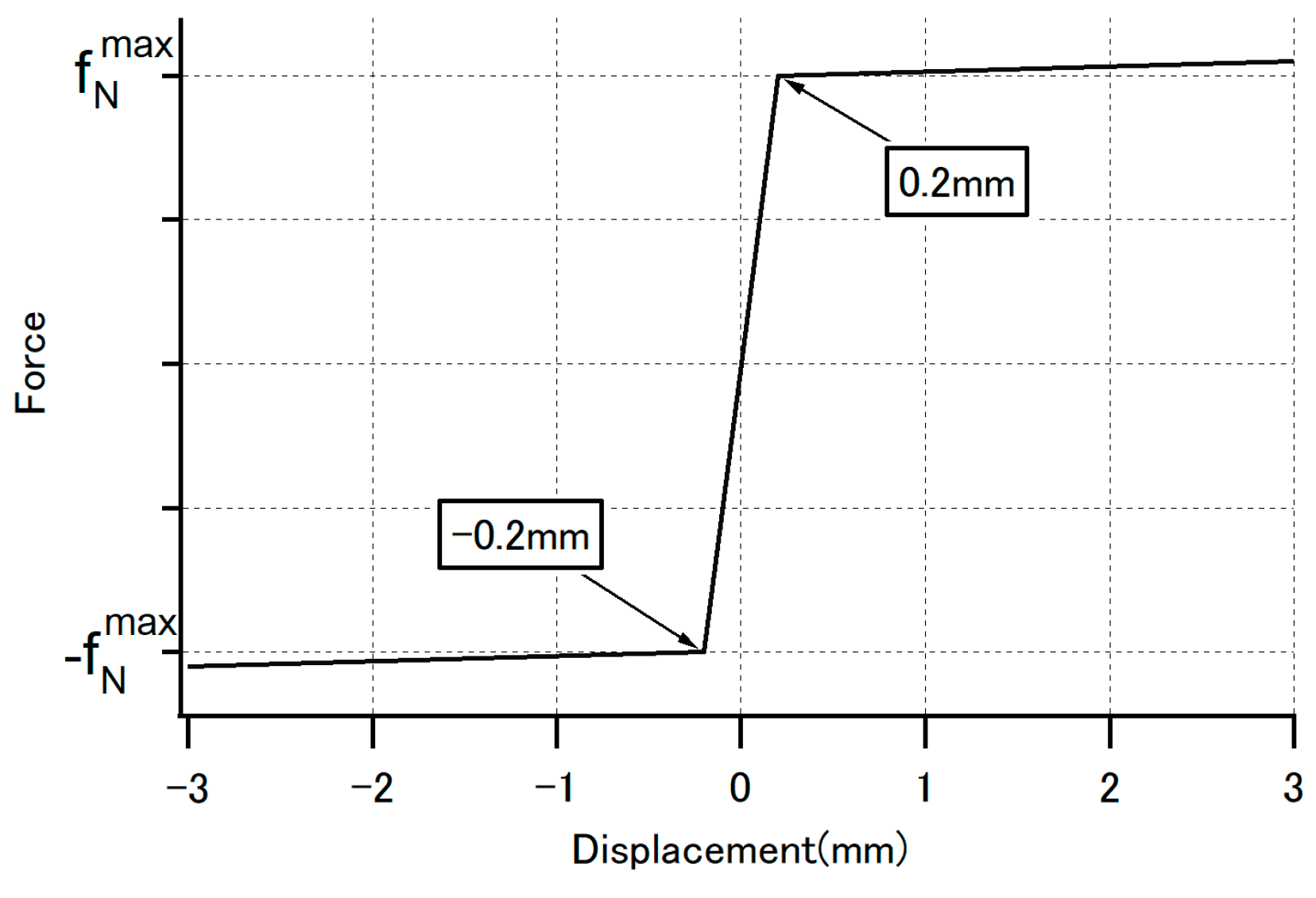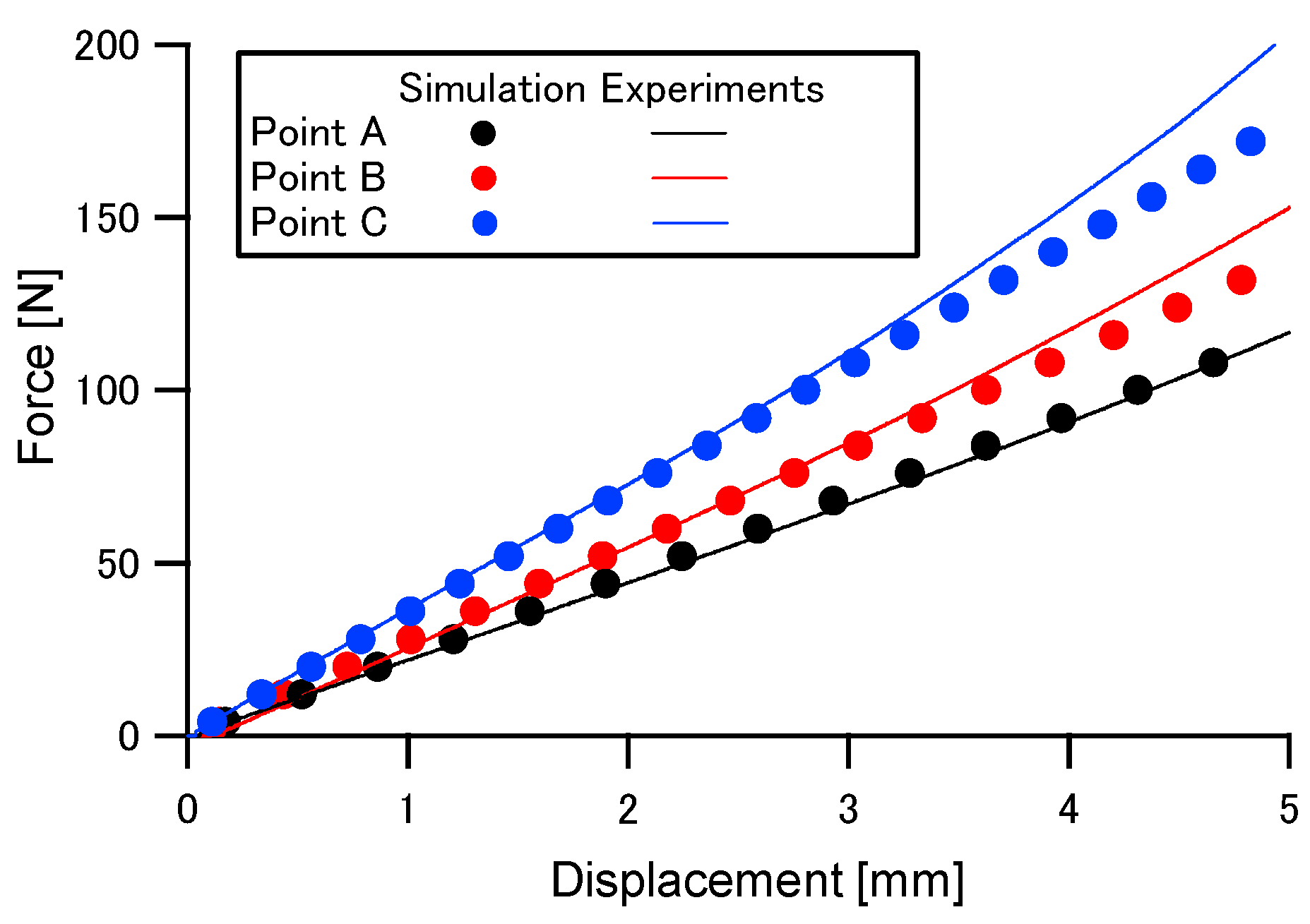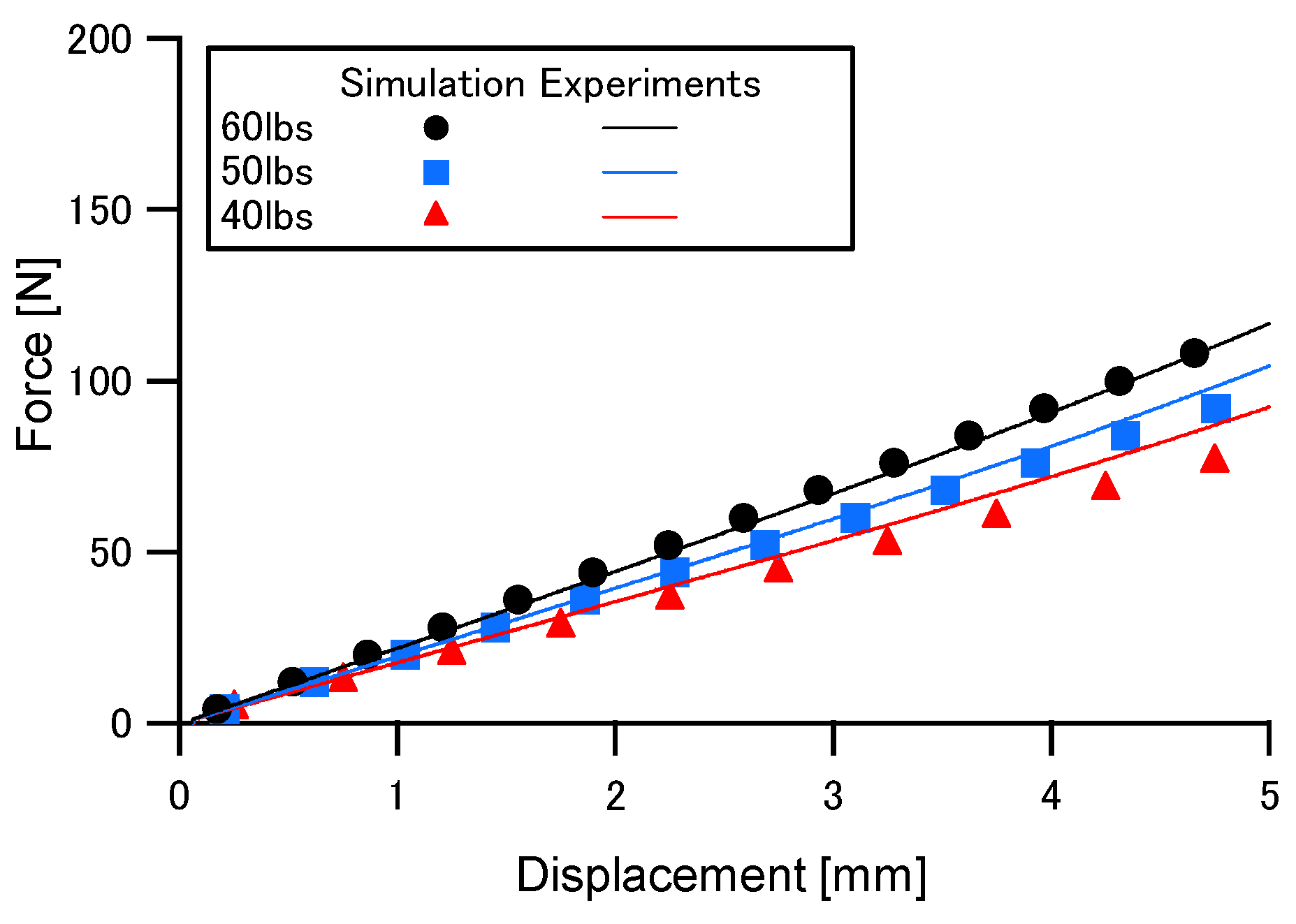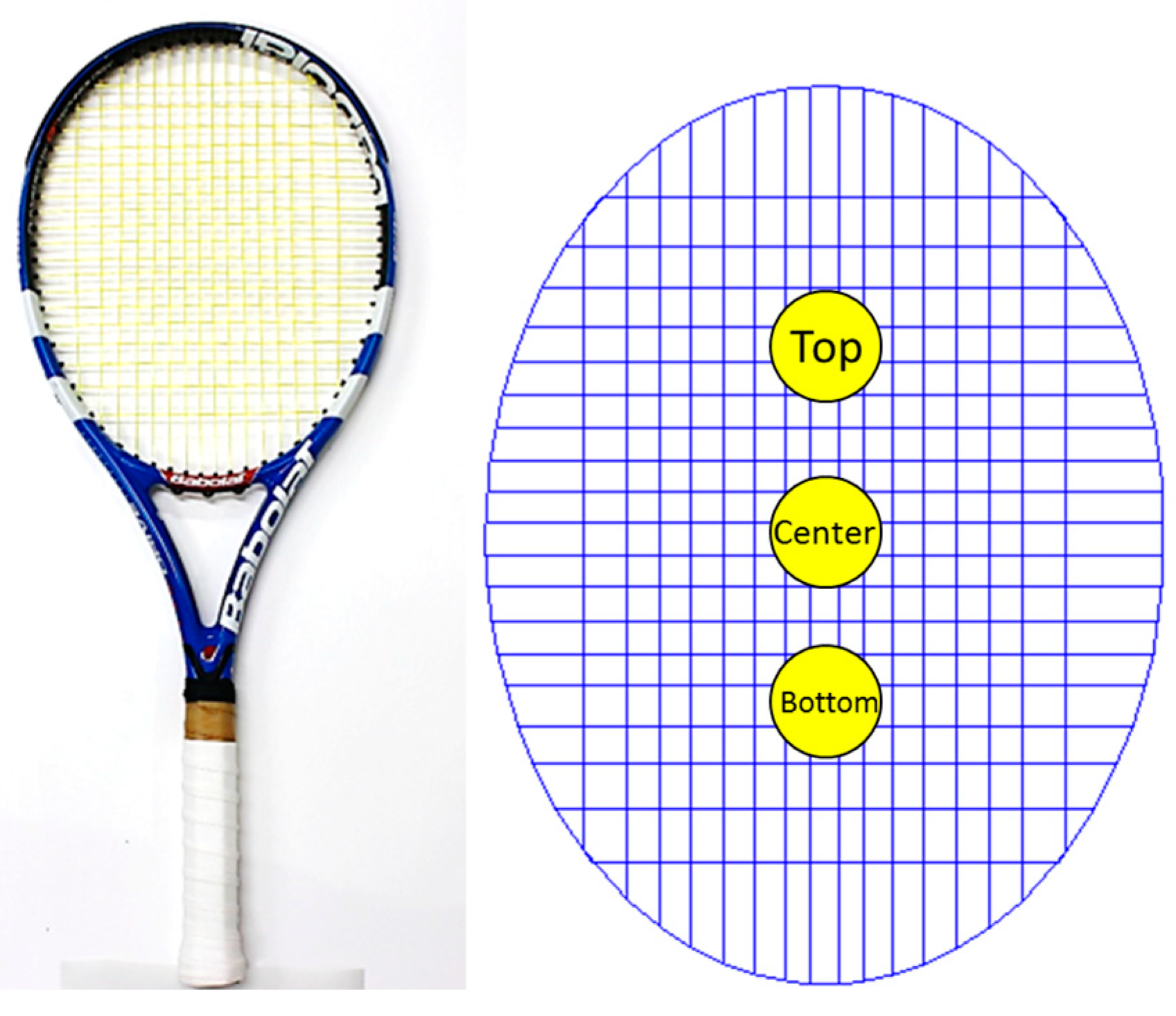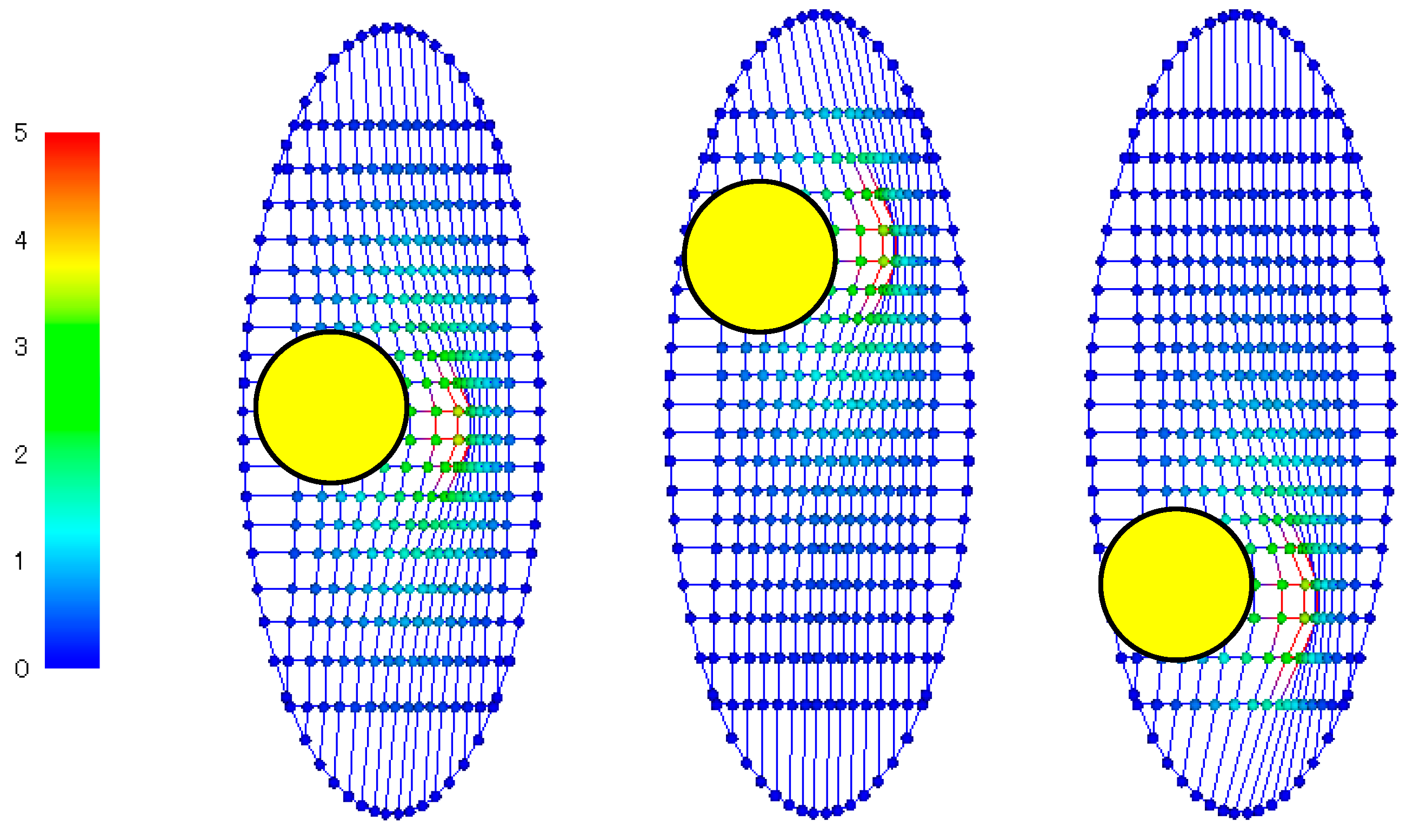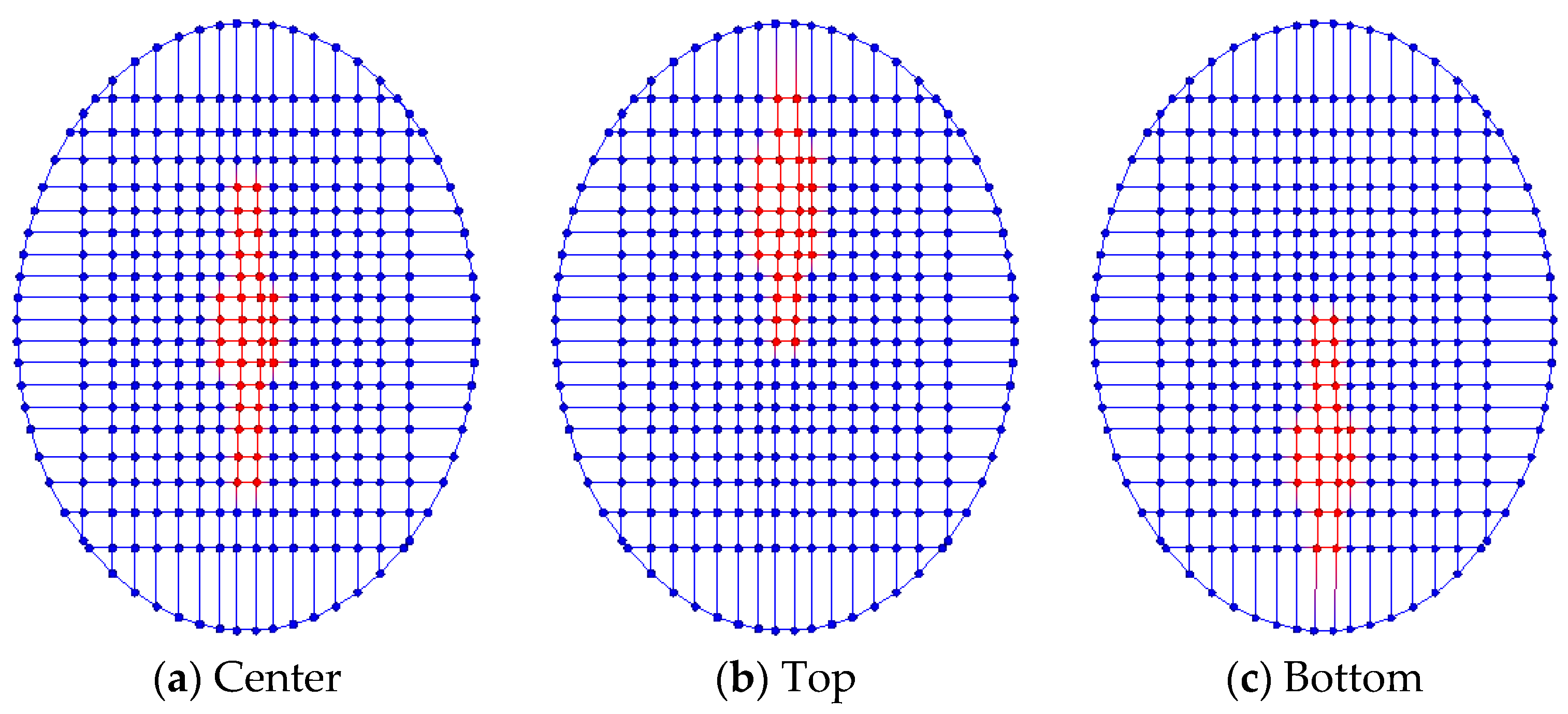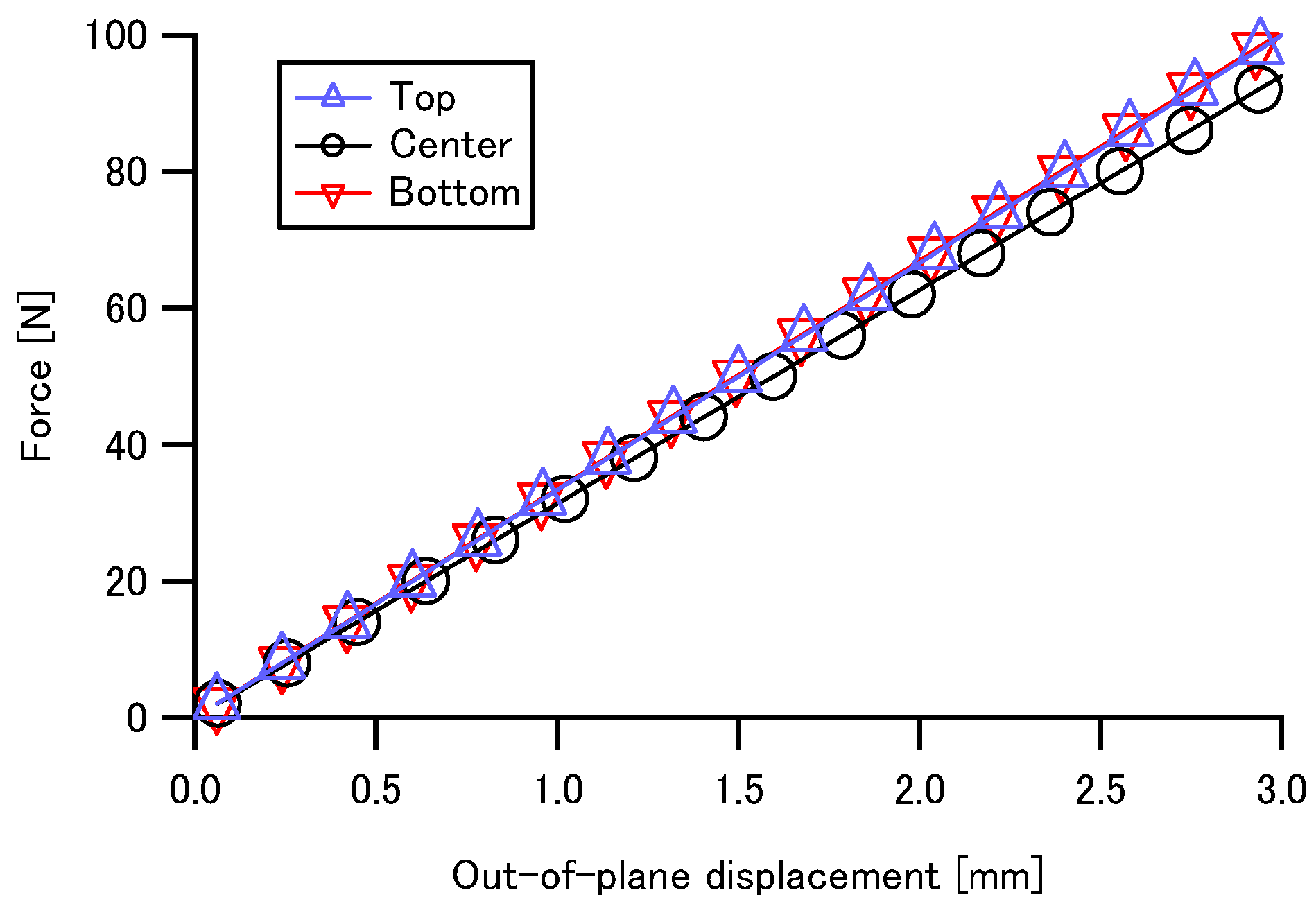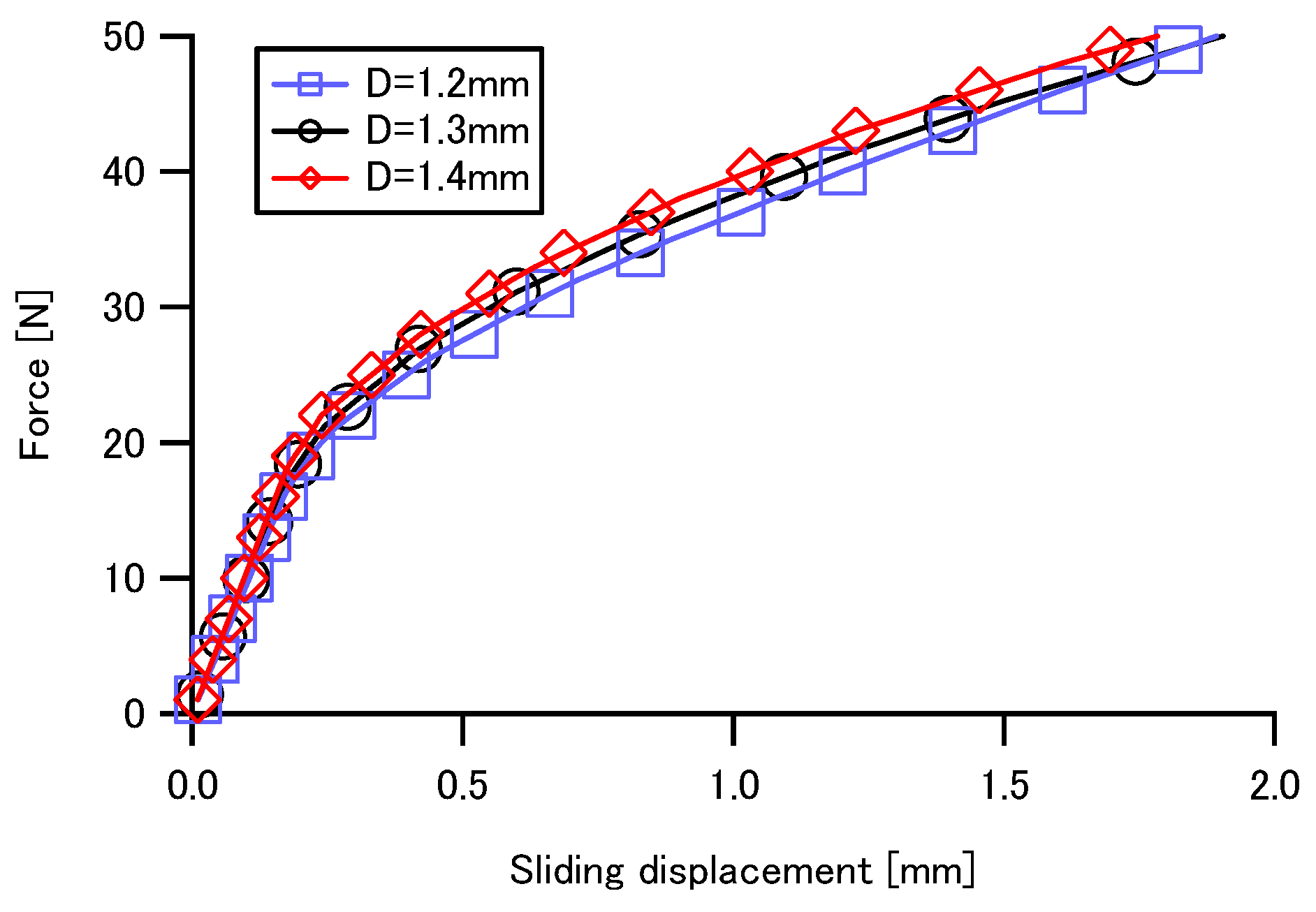1. Introduction
The performance and feeling of tennis rackets are realized by the combination of the racket’s frame and string bed. Tennis players select their own individual tennis racket frame and strings depending on their play style and playabilities, individually. Currently, natural guts, nylon, polyester-strings and hybrid strings are available for tennis racket. Diameters of the strings have ranged from 1.2 mm to 1.35 mm since the 19th century. With the exception of missed shots, mechanical contributions are applied to the tennis ball by the string bed of a tennis racket. The stiffness of the string bed in the out-of-plane direction affects the speed of the impacted ball. The sliding characteristics of strings in-plane affect to the spin of the ball. So, the number of cross and main strings and the length and interval of each string are important engineering issues when designing a tennis rackets.
The effect of string bed properties on ball spin was investigated in recent researches [
1,
2,
3,
4,
5,
6]. Allen et al. (2010) showed that reducing ball/string friction can increase rebound spin by a computational model [
1]. Haake et al. (2012) showed that rebound spin was dependent on inter-string friction experimentally [
5]. Nicolaides et al. (2013) investigated the effect of string bed pattern on ball spin [
6]. In these researches, they found that rebound spin decreased with the number of cross strings. Washida et al. (2014) showed measured data about relationships between number of cross strings and rebound spin [
7].
In this paper, an original numerical simulation program of finite element method for string bed in tennis rackets are described. The simulation program was coded by the Fortran Language in UNIX system. For numerical modeling, simple beam elements which represent tensile load were applied to the modeling of orthogonal main and cross strings. Nominal force at each intersection of strings was calculated and the Coulomb friction model was applied with an elastic-plastic constitutive model to represent the in-plane slide of strings. The validity of the developed code is investigated through comparison with the experimental results of string beds in rectangular aluminum jigs. Simulated results of a tennis racket are shown to represent the applicability of the developed code.
2. Materials and Methods
The 3-dimensional Cartesian coordinate system was applied to string beds in this study. The positional relationship of the coordinates is shown in
Figure 1. In preparation for the computational simulation, nodes for finite element analysis were prepared at all intersections of the main and cross strings. Also, additional nodes were prepared at grommets and their displacement was constrained. Beam elements (In
Figure 2) are applied between nodes to represent the tennis strings. Tension of cross and main strings
and and
were assumed to be constant in this study. Forces at
ith and
jth nodes in z-direction are given by following equations:
Here,
i and
j indicate respective node numbers.
is displacement in the z direction of the
ith node.
in Equation (1) corresponds to
for horizontal strings and
for vertical strings.
is the length between
ith and
jth nodes, which was updated at every step of the simulation. Length of strings
was calculated with
for cross strings and
for main strings.
is the adjusting coefficient of out-of-plane stiffness. The coefficient
is provided because there are strings that contribute to the out-of-plane stiffness and strings that do not. In
Figure 2, it can be seen that strings at the intersecting points of the main and cross strings were located above or below the other strings. It is suggested that the strings at the
jth node did not make a strong contribution to out-of-plane stiffness because they were compressed when vertical downward force was applied to the
jth node. Conversely, strings at the
ith node made a strong contribution to out-of-plane stiffness because they stretched when vertical downward force was applied to the
ith node.
For the elements of cross strings, force at the
ith and
jth nodes in the x-direction (orthogonal to the string) were formulated with the following equations:
The positional relationship of nodes, forces and displacement are shown in
Figure 3.
is displacement in the x-direction of the
ith node.
is frictional force at the
ith node, which equilibrates with external force under the maximum frictional force.
is defined as a function of the horizontal displacement of the
ith intersection of strings.
Force at the
ith and
jth nodes in y-direction are formulated with the following equations considering the angular change of a string with constant tension
.
Here,
is the displacement in the y-direction of the
ith node. When seeking
,
and
of main strings, Equation (1) can be applied for
of main strings. For in-plane stiffness, Equations (2) and (3) can be applied for
and
of main strings by exchanging the subscripts
and
representing direction. Here,
is the maximum frictional force of the
ith node.
was calculated as
where
is the frictional coefficient and
is normal force at the
ith node.
was calculated from the initial configuration of the string bed as follows:
Here,
is the diameter of the strings. String intersections did not slide easily when diameter
was large. Positional relationships of the nodes in Equation (5) are shown in
Figure 4. In this study, maximum frictional force
was calculated at all nodes of intersecting strings and assumed to be constant. For the simulation algorithm, an incremental calculation method was applied. Equations (1)–(3) were rewritten as incremental, as follows:
For cross strings,
and
are equal to
.
and
are equal to
.
was defined as follows:
In this study, elastic-plastic relation shown in
Figure 5 was applied for modeling of friction.
